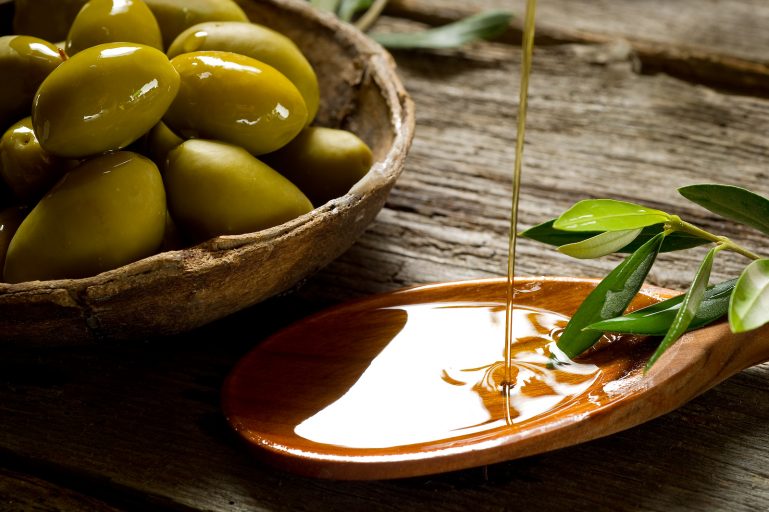Golden and fragrant, with a distinctive taste, olive oil is one of the old known cooking oils in the world. At one time, about 6,000 years ago, it was literally worth its weight in gold. As a result, cultivation of the olive tree spread rapidly, from Crete (and Greece) in 3,000 BC to Egypt a thousand years later.

photo: bigstock
Eventually, Franciscan monks moving north from Mexico discovered that land in the far southwestern part of the North American continent, from Arizona to California’s Central Valley, was ideal for growing olive trees.
Arizona’s first working olive farm and mill is located at Queen Creek, which operates as both an orchard and a commercial mill. It also offers a country store and restaurant. In fact, at the Queen Creek Orchard and Mill, one can take advantage of events and tours, an associated winery, and online ordering capability.
Olive oil rapidly became a big industry in the United States, as people discovered the benefits of olive oil. Farms sprouted up everywhere the tree thrived. Mills to process the olives into olive oil were fewer but highly important to growers for their ability to turn the small, black fruit – yes, the olive is a fruit – from solid to liquid form.
Other interesting but little-known facts about the olive include:
- Olive trees live between 300 and 600 years.
- It takes 15 years for an olive tree to reach first harvest
- The oldest certified olive tree just celebrated its 2,000th
- Because olive oil contains vitamin E and polyphenols, baked breads, pastries, and the like will last longer if you substitute olive oil for butter.
- Putting olive oil on salad helps the body absorb nutrients. Good to know since Yuma, Arizona is considered the Country’s Salad Bowl in winter because of all the leafy greens it produces!
- It takes about 11 pounds of olives to make one quart of extra virgin olive oil.
- The olive branch itself is a symbol of peace dating from the Biblical Flood, when a dove returning to the Ark carried an olive branch as proof of land and Jehovah’s forgiveness.
Olive oil has many uses, but the one where it truly shines is as a salad dressing. There, the pungent, slightly bitter fragrance and taste – enhanced by balsamic vinegar, garlic, lemon, honey, basil, or a blend of herbs (fines herbes) – makes salad into a gourmet spree!
But you don’t need to save this golden oil for salads. Fill Your Plate has pages of recipes, from savory but familiar Minestrone soup to exotic Catherine’s stuffed nasturtium leaves and Brent’s Honey Bacon Green Bean Bundles.
For dessert, try zucchini and squash spice cake using mesquite flour. Interesting!
Fill Your Plate can also turn you on to the best locations for in-season, farm fresh produce, fruit, and meat. Whether your recipe – or your menu – calls for wine, nuts, buffalo meat, goat’s milk, or barbecue sauce, you can find it quickly and easily on Arizona’s menu-planning Internet site. Fill Your Plate allows you to do just that, quickly, simply and affordably.
Buen appetito! Bon appetit! Velbekomme! Gochisōsama deshita! En Guete! Eat hearty!
Related articles
- Cause a Stir with these Sensational Salads (fillyourplate.org)
- Checking In with the Celebrity Chefs of Fill Your Plate (fillyourplate.org)
- “Back to Basics” Nutrition Advice From Experts: Healthy Make and Takes (fillyourplate.org)

